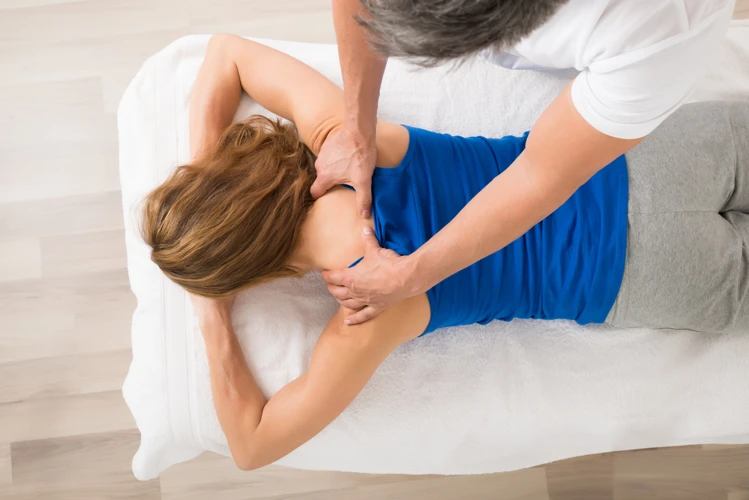Massage therapy has been used for centuries to improve physical wellbeing and provide balance to life. It has been known to reduce stress, alleviate pain, and improve circulation. Massage can also help improve flexibility, posture, and range of motion. This article will explore how massage can improve an individual’s physical wellbeing and bring balance to their life. It will look at the various types of massage, the benefits they offer, and the potential risks associated with massage therapy. Finally, it will provide tips for finding a qualified massage therapist and getting the most out of massage therapy.
Contents
Benefits of Massage
Improved Physical Wellbeing
Regular massage sessions can help to improve physical wellbeing by relieving pain, increasing circulation, reducing tension and stiffness, and improving flexibility. Massage can also help to reduce the effects of stress on the body, which can include headaches, insomnia, fatigue, and depression. Massage is a natural and non-invasive way to increase overall health and wellbeing.
Enhanced Well Being
Massage can also help to enhance overall wellbeing by helping to reduce stress, improve mood, and promote relaxation. It can help to reduce anxiety and depression, and can also help to improve self-esteem and body image. Massage can also help to improve concentration and focus, as well as improve sleep quality. With regular massage sessions, it is possible to achieve a sense of balance and wellbeing in all areas of life.
How does massage enhance well-being? Massage helps to reduce stress and promote relaxation, which in turn can help to improve overall wellbeing. Massage also helps to reduce tension, improve circulation, and increase flexibility, all of which can help to improve physical wellbeing. The combination of physical and mental benefits of massage can help to bring balance to life.
Types of Massage
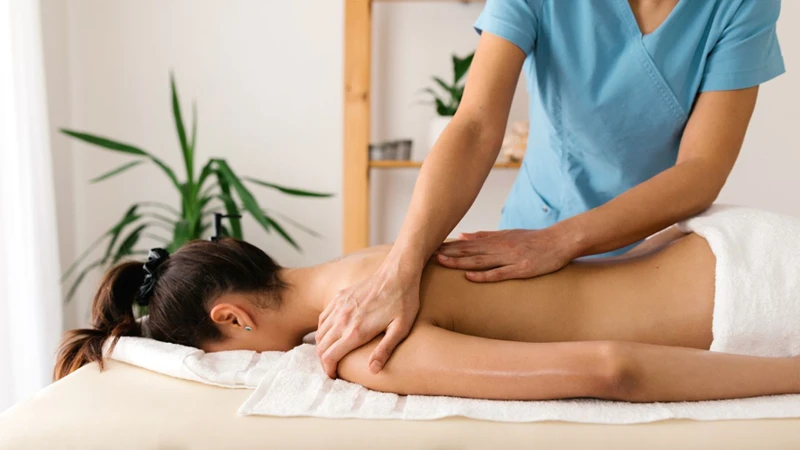
Swedish Massage
Swedish massage is a type of massage that helps to reduce stress and tension by using a variety of techniques such as kneading, friction, and tapping. This type of massage can help to improve circulation, reduce pain, and increase flexibility.
Deep Tissue Massage
Deep tissue massage is a type of massage that focuses on the deeper layers of muscle tissue. It helps to reduce chronic pain and tension, and can help to improve posture and flexibility.
Sports Massage
Sports massage is a type of massage that is specifically designed for athletes. It helps to improve performance, reduce the risk of injury, and reduce fatigue.
Thai Massage
Thai massage is a type of massage that focuses on the use of pressure points and stretching techniques. It helps to improve flexibility, reduce pain, and improve overall wellbeing.
Tips for Choosing the Right Massage
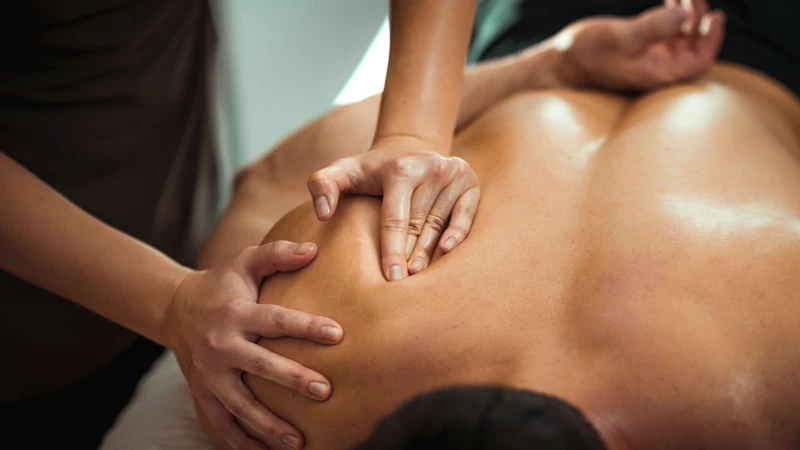
| Tip | Explanation |
|---|---|
| Research | Do your research to find a massage therapist who is experienced and has good reviews. |
| Ask Questions | Ask questions about the type of massage the therapist offers, their experience and the cost. |
| Verify Credentials | Ensure the massage therapist is licensed and insured. |
| Listen to Your Body | Pay attention to how your body feels during the massage and communicate any discomfort to the therapist. |
| Check Your Schedule | Make sure you can commit to the appointment schedule, as regular massage sessions are necessary for long-term results. |
Massage therapy can be a great way to promote physical and mental wellbeing. When selecting the right massage, it is important to take the time to research and find a massage therapist that is experienced and has good reviews. Ask questions about the type of massage they offer, their experience and the cost. Make sure the therapist is licensed and insured. During the massage, pay attention to how your body feels and communicate any discomfort to the therapist. Finally, make sure you can commit to the appointment schedule, as regular massage sessions are necessary for long-term results.
What to Expect from Massage
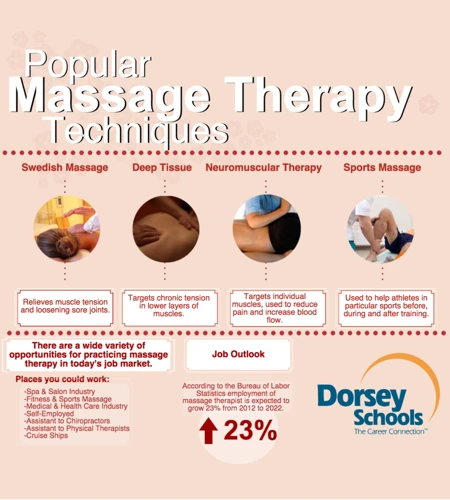
| Type of Massage | Expectation |
|---|---|
| Swedish Massage | Kneading, rolling, and tapping motions to relax and loosen tight muscles. |
| Deep Tissue Massage | Focused pressure to relieve chronic muscle tension. |
| Sports Massage | A combination of Swedish and deep tissue massage for athletes. |
| Trigger Point Therapy | Applying pressure to tight, tender muscle knots to reduce pain. |
| Shiatsu Massage | A form of Japanese acupressure to stimulate energy flow. |
| Hot Stone Massage | Using heated stones to loosen tight muscles and promote relaxation. |
Massage can reduce stress, improve circulation, increase flexibility, reduce pain, and promote relaxation. Depending on the type of massage, your massage therapist may use kneading, rolling, tapping, and other motions to work on different muscle groups. Deep tissue massage and trigger point therapy may involve more focused pressure to release chronic muscle tension. Sports massage is a combination of Swedish and deep tissue massage tailored to the needs of athletes. Shiatsu massage uses a form of Japanese acupressure to stimulate energy flow, while hot stone massage uses heated stones to help relax tight muscles.
Side Effects and Considerations
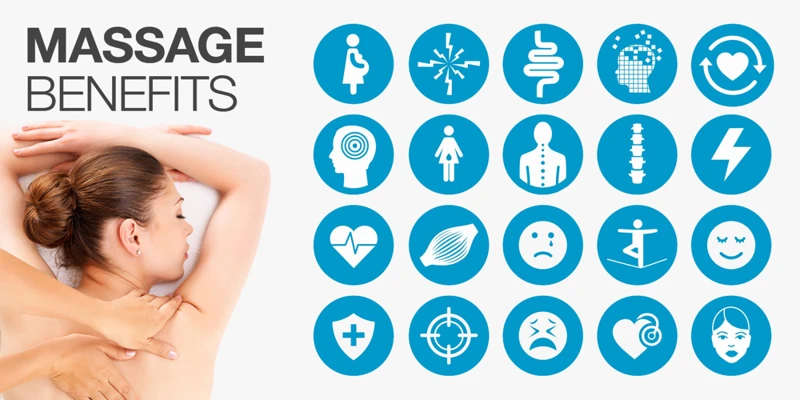
- Expect Muscle Soreness: While massage therapy can provide relaxation and relief from tension, it can also lead to muscle soreness, especially if the massage is deep or intense. It is not unusual to experience some soreness after a massage, but it should not be too severe.
- Avoid Bruising: Bruising can occur after a massage, especially if there is a lot of pressure applied. To avoid bruising, let your massage therapist know if you experience any discomfort during the massage.
- Discuss Medical Conditions: If you have any medical conditions, it’s important to discuss them with your massage therapist. Certain medical conditions, such as cancer, osteoporosis, or diabetes, may require special precautions or techniques.
- Be Aware of Trigger Points: Trigger points are areas of tightness in muscles and other tissues. These can be painful and can be exacerbated by massage. If you experience pain during your massage, inform your massage therapist so that he or she can modify the technique.
- Know When to Stop: If you experience any discomfort during the massage, let your massage therapist know immediately. It is important to stop the massage if you experience any pain or discomfort.
Safety Tips for Massage

1. Make sure your massage therapist is licensed. It is important to ensure that your massage therapist is properly licensed and insured in order to avoid any unforeseen health risks or injuries.
2. Communicate your needs. Before your massage, make sure to communicate any areas of discomfort or concern to your therapist, as well as any allergies or medical conditions you may have.
3. Use proper draping. During the massage, make sure your therapist is using proper draping techniques to ensure your modesty and privacy.
4. Drink plenty of water. Massage can be dehydrating, so it is important to drink plenty of water before and after your massage to help flush toxins from your body.
5. Don’t be afraid to speak up. If at any point during your massage you become uncomfortable or experience any pain, it is important to speak up and let your therapist know.
How to Maximize the Effects of Massage
- Choose the right massage therapist: A massage therapist who is experienced in the type of massage you are looking for will have the best results. Make sure the massage therapist is certified, insured, and knowledgeable about massage techniques and treatments.
- Set realistic expectations: Massage can help to reduce pain and stress, but it is not a cure-all. Be realistic about the results you can expect from massage.
- Follow the massage therapist’s advice: Your massage therapist will have advice on how to maximize the effects of massage. Follow their advice to get the best results.
- Stay hydrated: Drinking plenty of water before and after your massage will help to flush out toxins and keep your muscles hydrated.
- Eat healthy: Eating healthy is important for overall physical wellbeing. A balanced diet will help you get the most out of your massage.
- Warm up before your massage: Stretching before your massage will help to loosen up your muscles and prepare them for the massage.
- Communicate with your massage therapist: Let your massage therapist know if you have any areas of concern or areas you would like to focus on. This will help your massage therapist tailor the massage to your specific needs.
- Listen to your body: During your massage, listen to your body and pay attention to any changes. If you feel any discomfort or pain, let your massage therapist know right away.
- Take it easy afterwards: After your massage, take it easy. Allow yourself time to relax and let your body recover.
Frequently Asked Questions
What Types of Massage Are Available?
Massage therapy is available in many different forms and techniques, including Swedish massage, deep tissue massage, sports massage, prenatal massage, hot stone massage, and more. Each type of massage has different benefits and can be tailored to fit the individual needs of the client. Depending on the desired outcome, different types of massage can be combined to create a unique and powerful experience.
How Often Should I Get a Massage?
Regular Massages: Massages should be done on a regular basis in order to reap the full benefits of massage therapy. Depending on your individual needs, weekly or bi-weekly massages can be beneficial.
Specific Massage: If you are experiencing a specific issue, such as chronic pain or a sports-related injury, you may need to receive more frequent massages. Your massage therapist will be able to advise you on the best course of action.
Other Considerations:
- Your lifestyle – Do you experience a lot of stress? Do you have an active lifestyle?
- Your physical condition – Do you suffer from chronic pain? Do you have any medical conditions?
- Your budget – How often can you afford to get a massage?
Your massage therapist will be able to provide you with personalized advice on how often to get a massage based on your individual needs.
What are the Benefits of Massage?
Massage can provide a number of physical and psychological benefits, including improved blood circulation, relaxation, tension relief, and improved posture. It can also help reduce stress, alleviate pain, and boost the immune system. Massage can improve flexibility and range of motion, improve mental clarity, and reduce inflammation. Regular massage can also help to improve the quality of sleep, reduce anxiety and depression, and promote overall wellbeing.
Is Massage Safe for Everyone?
Massage is generally safe for most people when performed by a trained practitioner. It can provide relief from pain and stress, improve circulation and reduce muscle tension. In some cases, massage may be contraindicated due to certain medical conditions or medications. It is important to speak to your doctor or massage therapist before beginning any massage therapy to ensure your safety.
What Should I Expect After Getting a Massage?
After a massage, you may experience a feeling of relaxation and improved wellbeing. You may also notice improved range of motion and reduced muscle soreness and stiffness. Additionally, many people report improved sleep, reduced stress, and a general sense of wellbeing. Your massage therapist may also give you advice or tips on self-care, such as stretching or using a foam roller.
Conclusion
Massage can be an effective way to improve physical wellbeing and bring balance to life. It can reduce stress, improve muscle tone and flexibility, reduce pain, improve circulation, and help to alleviate the symptoms of many chronic conditions. Additionally, regular massage can help to improve mental health and reduce fatigue. With the right massage therapist and the right massage technique, massage can be an important part of promoting overall health and wellbeing.

